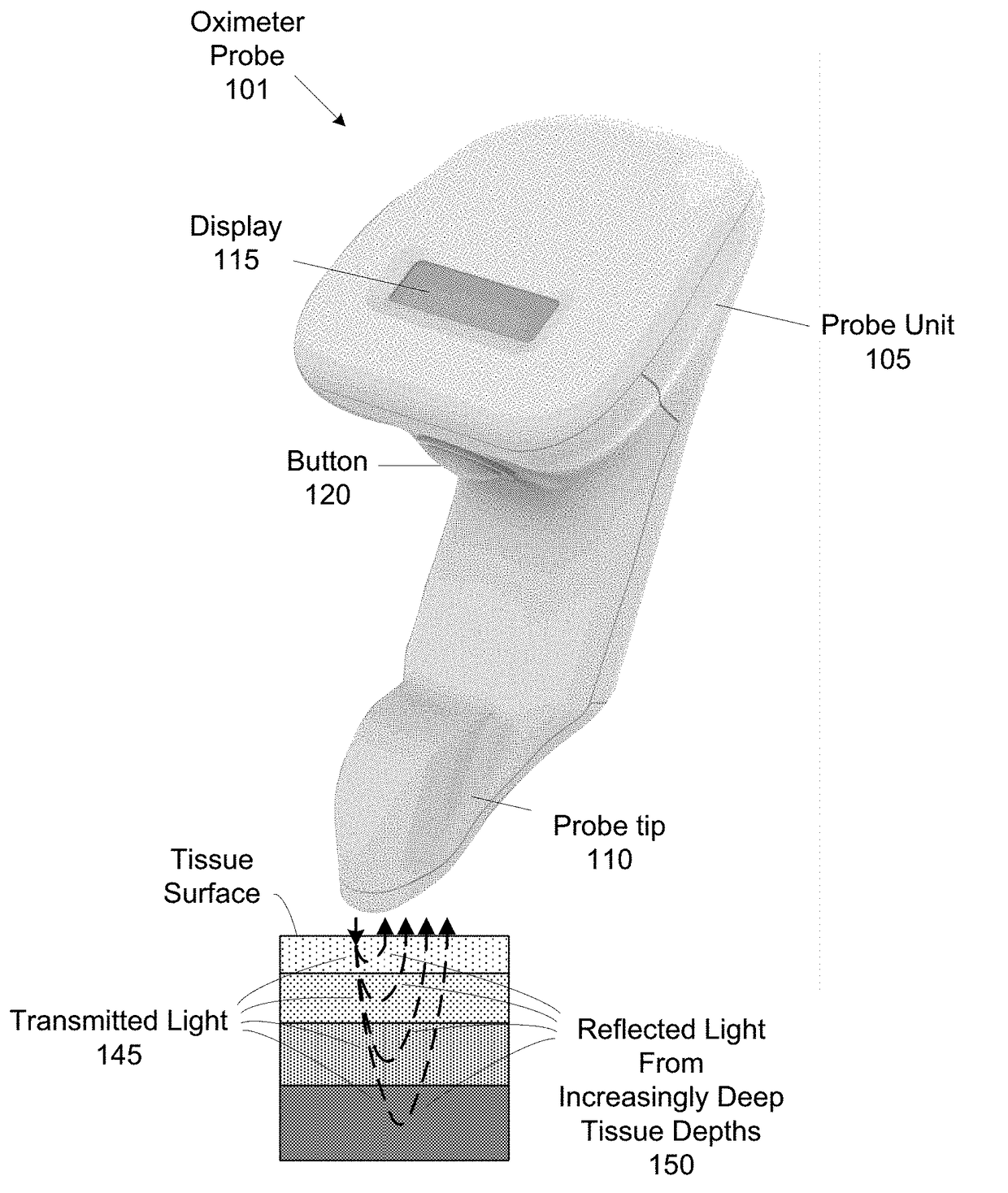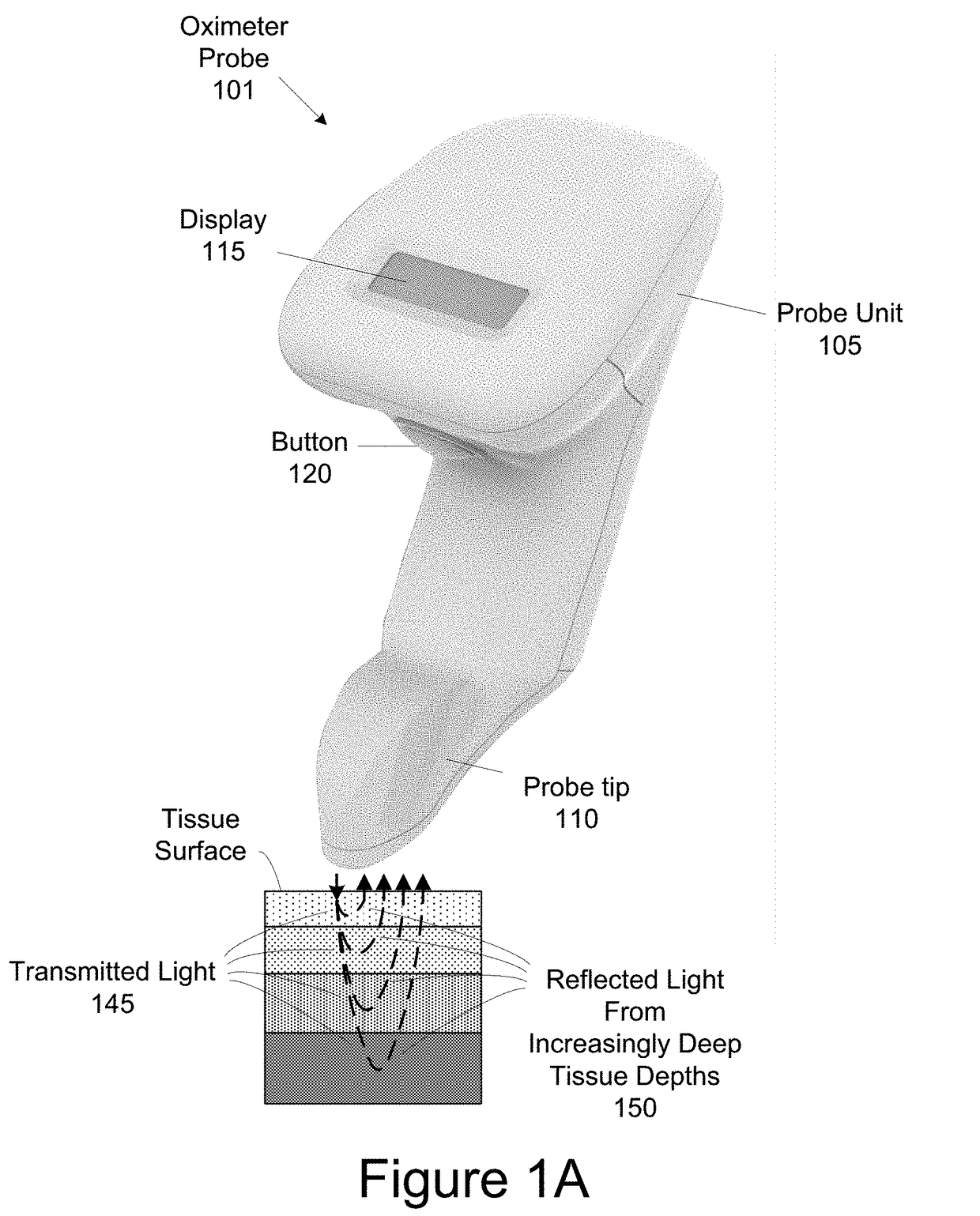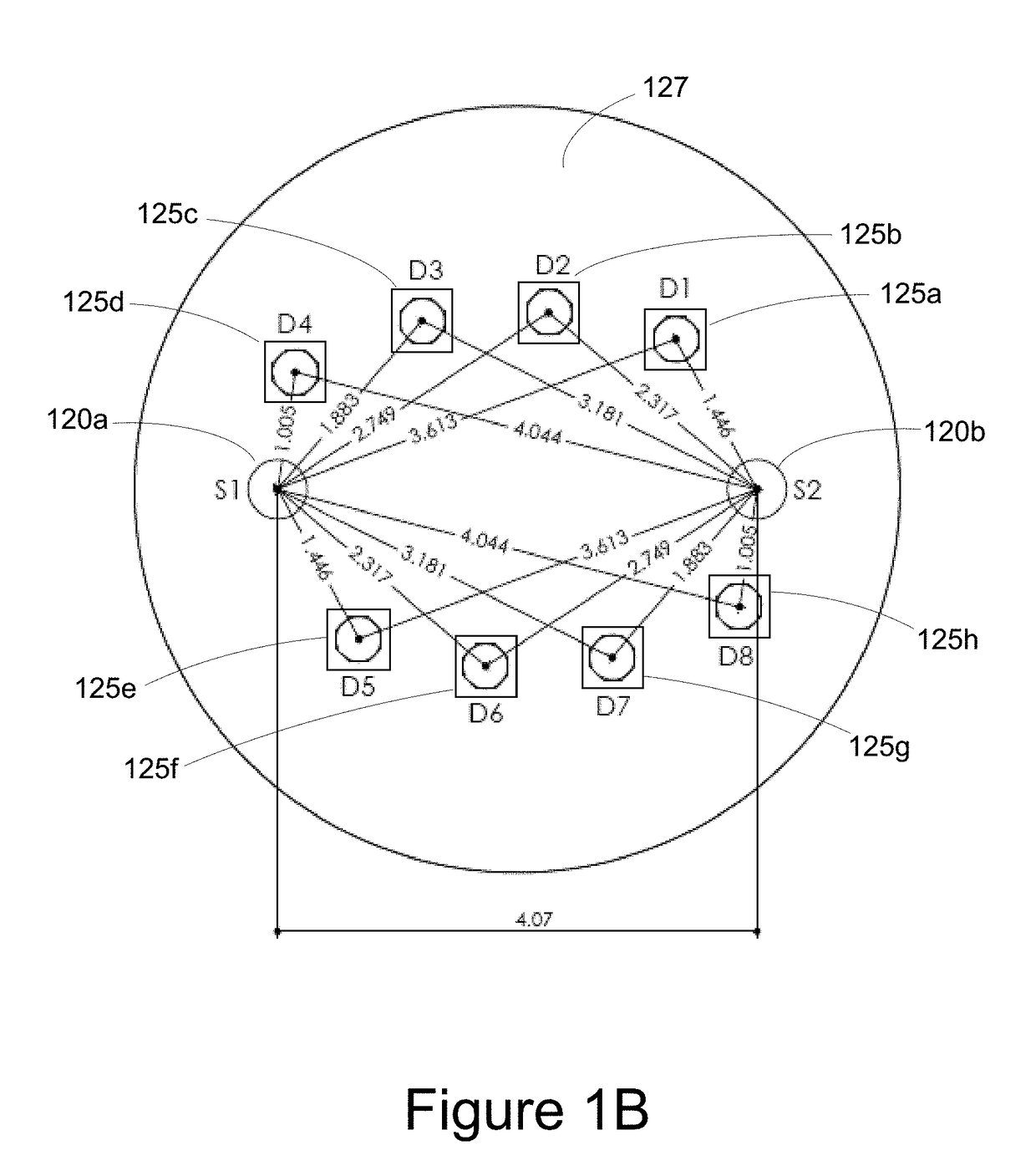Oximetry Probe with Electronically Selectable Tissue Depth Analysis
a technology of oximetry and tissue depth analysis, applied in the field of oximeter probes, can solve problems such as unstable tissue oxygenation state of patients
- Summary
- Abstract
- Description
- Claims
- Application Information
AI Technical Summary
Benefits of technology
Problems solved by technology
Method used
Image
Examples
Embodiment Construction
[0045]The present invention generally relates to a wireless, handheld oximeter probe for measuring tissue oxygen. The oximeter probe has a source and a number of detectors that can be variously accessed for measuring tissue oxygen saturation from different tissue depths of tissue.
[0046]FIG. 1A shows a handheld oximeter probe 101. This oximeter probe is used to make tissue oxygen saturation measurements of target tissue. In an implementation, the oximeter probe is a tissue oximeter, but in other implementation, the oximeter probe can be a pulse oximeter. Oximeter probe 101 has two portions, a probe unit 105 and probe tip 110.
[0047]The handheld oximeter probe can be used in a variety of environments, such as surgical, sterile environment for spot measurements, doctors offices, at sporting events (e.g., personal and professional sports uses), homes, retirement communities, hospice care, first responders (e.g., paramedics, emergency medical technicians, ambulance care, and fire fighters...
PUM
 Login to View More
Login to View More Abstract
Description
Claims
Application Information
 Login to View More
Login to View More - R&D
- Intellectual Property
- Life Sciences
- Materials
- Tech Scout
- Unparalleled Data Quality
- Higher Quality Content
- 60% Fewer Hallucinations
Browse by: Latest US Patents, China's latest patents, Technical Efficacy Thesaurus, Application Domain, Technology Topic, Popular Technical Reports.
© 2025 PatSnap. All rights reserved.Legal|Privacy policy|Modern Slavery Act Transparency Statement|Sitemap|About US| Contact US: help@patsnap.com



